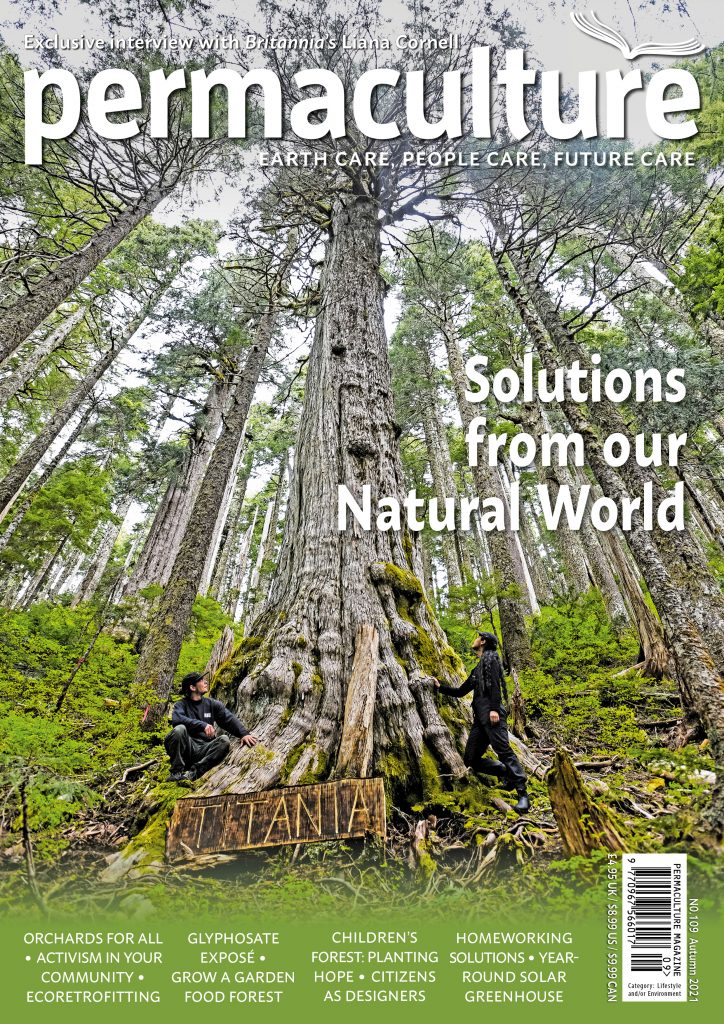 The following post has been published in the Autumn 2021 copy of, the quite brilliant, Permaculture magazine, which is available to buy from https://www.permaculture.co.uk/issue/autumn-2021/
The following post has been published in the Autumn 2021 copy of, the quite brilliant, Permaculture magazine, which is available to buy from https://www.permaculture.co.uk/issue/autumn-2021/Saturday, August 14, 2021
Over-wintering Mason Bees
 The following post has been published in the Autumn 2021 copy of, the quite brilliant, Permaculture magazine, which is available to buy from https://www.permaculture.co.uk/issue/autumn-2021/
The following post has been published in the Autumn 2021 copy of, the quite brilliant, Permaculture magazine, which is available to buy from https://www.permaculture.co.uk/issue/autumn-2021/Sunday, August 08, 2021
Feeding The SubPod Wormery
It's a couple of months now since I received my SubPod wormery from Wiggly Wigglers and blogged about how I set it up - https://blog.sherlock.co.uk/2021/05/unboxing-and-setting-up-subpod-wormery.html
It's an absolute doddle to look after - so easy in fact that you can forget you have it, especially when you have other more standard tray wormeries to look after. With tray wormeries every time it rains (it's summer in the UK so that's a fair bit) you have to check the sump as the last thing you want is your worms drowning due to excess liquid building up - that and the fact said liquid is an amazing plant feed for tomatoes, bedding plants and hanging baskets etc so should absolutely NOT be wasted!
Anyway, here's a (very quick and quite poorly filmed) video of me checking the SubPod and adding some new food.
And finally, I added that layer of shredded paper I mentioned at the end of the video.
How Am I Finding It?
Except for the precious space it is taking up in my (very small) raised vegetable patch I am loving it, and I will most likely expand the vegetable patch anyway to gain more room to grow more.
It really is the most hassle free wormery I currently own as there's no need to worry about liquid collecting in the sump as it seeps into the ground around it, feeding the soil and, therefore, the plants.
Remember, you don't really need to feed plants, but do need to feed the soil - improving the health of your soil automatically improves that of your plants, making them stronger, more resistant to pests and better able to deal with the weather (both wet and dry).
And, whereas in a tray system (such as the Can-o-worms, Worm Cafe, Urbalive and Worm City etc) the worms are stuck in a container and therefore susceptible to changes in pH and liquid levels, the SubPod makes life very much easier for them as they can just travel through the holes in the part buried in the soil and come back when they are ready. Some people may fear that they all escape and not come back, but there's no need to worry about that at all - if you keep the level of food waste up then they will come from far and wide for a good feed, and likely brings friends from elsewhere as well.
So, it is going well so far and the worms are working the waste nicely. It's still too soon to find how easy (or not) emptying it will be but if the theory of stopping feeding one side and start on the other until all the worms have moved across is true (no reason for it not to be) then it shouldn't be any harder than a tray system, and likely quite a bit easier.
Bokashi
I often see people in composting groups asking about adding Bokashi to wormeries. I have done this in the past but you really have to be careful of how much and how often you add Bokashi waste because it can change the pH and cause issues within the bin. I once lost a 10 year old established wormery to protein poisoning as a result of over-feeding and it is not a pleasnt experience (and smells like you wouldn't believe).
However, in the SubPod you could try adding normal waste on one side and Bokashi waste on the other, safe in the knowledge that the worms can travel freely (out of the bin if necessary) and come back when the pH has leveled off and the waste is in an easier state for them to consume.
I have yet to put this theory into practise as I mostly Bokashi during the Winter months these days, or in my HotBin, but I do hope to do some experimenting later in the year to see if this theory works OK.
Sunday, May 23, 2021
Unboxing And Setting Up The Subpod Wormery
Being underground, Subpod creates a natural environment for compost worms. Having access to the soil means they can feed and breed as rapidly as they like, because there’s always room for their population to grow. Soil is an insulator, and in hot weather, compost worms will instinctively escape into soil to cool down. As the weather turns cold, it will keep your worms warm and active during winter (as long as the soil doesn’t freeze). Every time your worms leave Subpod, their movement aerates your garden soil and increases its nutrient content.

Once together remove the mats and prepare to fit the lid. Now this can definitely be fiddly and was a lot harder (for me at least) than Subpod lead you to believe. Line up the hinges very carefully and make sure they clip into place. It may be better with an extra set of hands to help keep everything lined up when clipping the lid into place. I found this a bit of a pain on my own, but that could easily just be me!
- Smell-free and pest-proof
- Composts up to 15kg of food waste a week
- Suitable for households of 1 - 6
- Dual compost chambers
- Effortless 5-minute-a-week maintenance












